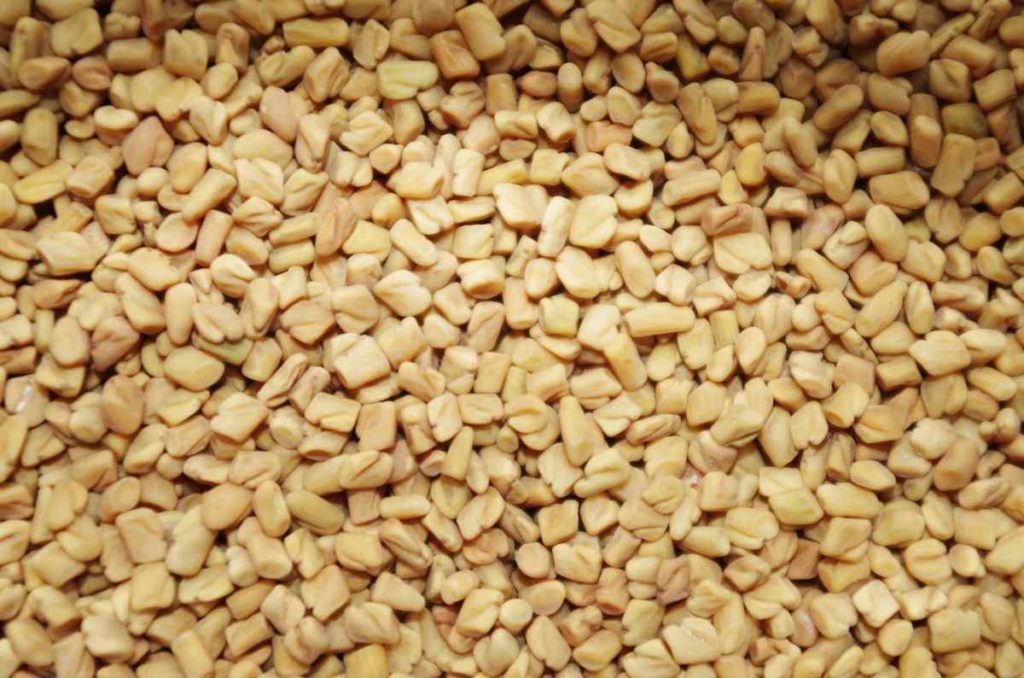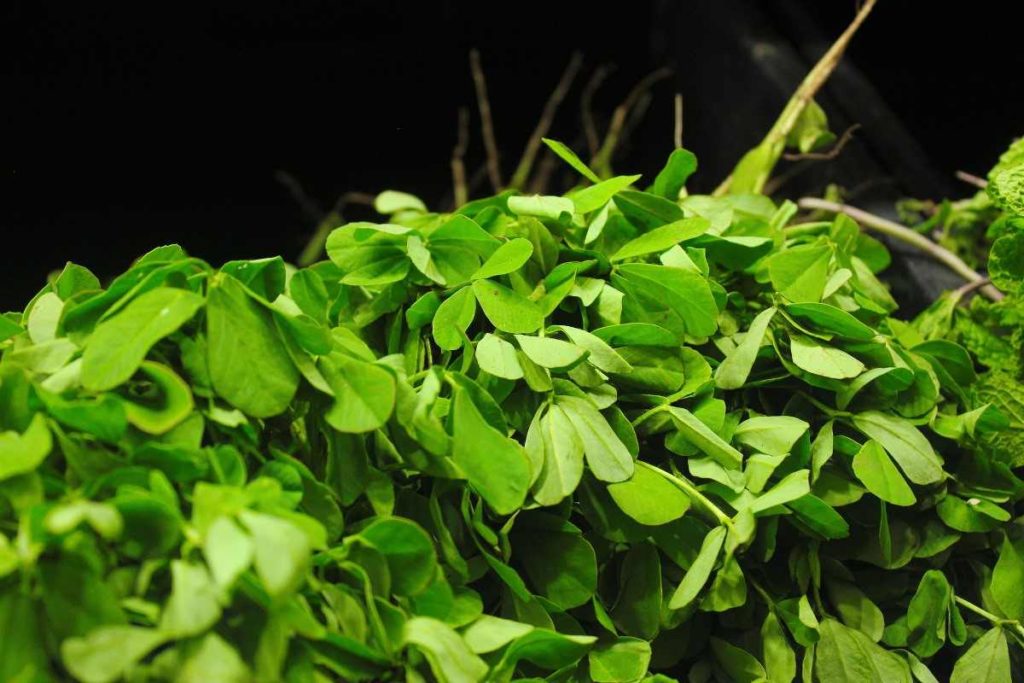Introduction to Growing Methi in Balcony
Here, today we are going to discuss how to grow the fenugreek (methi) plant in the balcony. The scientific name is Trigonella foenum-graecum. It is the fastest-growing herb and with low maintenance. Growing fenugreek plant in your balcony is easy. It is an all-purpose plant like seeds of fenugreek that are used as spices, dried leaves as Kasuri Methi, and fresh leaves as a leafy vegetable. It tastes sweet and slightly bitter. Fenugreek is a shallow-rooted plant. It is an annual herb. India occupies a major position among fenugreek growing countries worldwide. In India, Rajasthan produces more than 80% of fenugreek. Other growing states in our country are Gujarat, Chhattisgarh, Madhya Pradesh, and Uttar Pradesh. It is a cool-weather crop. You can grow fenugreek in pots and containers in your balcony.
A Step-by-Step Guide to Growing Methi in Balcony
As it is a shallow-rooted plant, you don’t need a deeper container to grow them. Just you need a wide container. Fill up the container or pot with a rich potting mix. The potting mix is a planting soil. You can even have a mix of 1/3 part of the container with vermicompost or with any cow or horse manure to it. Spread the seeds of fenugreek all over the pot and dust a thin layer of soil briskly to cover the seeds.
Advantages of Growing Methi in Balcony
They are even suitable for growing indoors. Fenugreek herb has many health benefits such as lowering sugar levels, controlling cholesterol. So planting fenugreek in your balcony can help you in many ways. They can even use has a better alternative of spinach and other greens, if they are planted in your indoor.
Tips and Safety Measures for Growing Methi in Balcony
- Be sure of using wide containers.
- Be sure that their containers have drainage holes at bottom of them.
- It should be placed where there is direct and full sunlight.
- It should not be placed in a shady area.
- Water them regularly.
- Moisture should not dry up.
- Overwatering may cause damage.
- The mixing of organic fertilizer with soil is mandatory.
- Check the pH of the soil.
- The soil must be well-drained.
- Do the harvesting at a right time.
- Properly sow the seeds.
Steps for Growing Methi in Balcony
- Type of container for growing Methi in balcony
- Climatic conditions
- Suitable soil and fertilizer for growing Methi in balcony
- How to sow the seeds
- How to germinate the seeds for growing Methi in balcony
- Watering quantity
- Harvesting
Choosing the Type of Container for Growing Methi in Balcony
Take any type of containers or pots of your own choice, more preferably a wide container having 6-8 inches deep is best for growing in the balcony, and make sure that containers have a drainage hole at the bottom of them. Fill up the container with the best potting soil and organic manure. Adding Composted manure improves soil texture.
Suitable Climatic Conditions for Growing Fenugreek
Fenugreek plants need full sunlight and even cool temperatures. Most of them are grown in warm climates. They just no need 6 to 8 hours of sunlight; they need full sunlight. So they grow well in the warm climate when the temperature ranges from 10 C to 32 C. If you want to plant it for seeds, grow it in early summer. If you are growing them to use as a vegetable, then you can plant them anytime.
Soil and Fertilizer Requirement for Growing Methi in Balcony
Potting soil is used for planting in containers and pots. Fenugreek can be grown on wide varieties of soil but the soil must be well-drained and should be loose in texture. A slightly acidic pH balance is required. In-between 6 to 7 pH is suitable for this fenugreek plant. You can even grow fenugreek plant without soil; in water. But growing these leafy vegetables in the soil will help in the growth and development of the plant. These seeds should be continuously kept moist, but don’t overwater them for this reason. Instead of overwatering them, you can mix sand, available in rivers in the potting soil, which helps them to be moist all the time. And you even need to have manure which helps them to fertilize better.
Fenugreek does not require a much amount of fertilizer. At the time of planting, you can mix fertilizer in the ratio of 2:1 with the soil, and that will help in growing for a few weeks. And also, feed the plant with balanced liquid fertilizer, every other week. That improves the growth of the plant.
Sowing the Methi or Fenugreek Seeds
Sowing is the main step in this process. This plant doesn’t like to be transplanted after germination. You need to buy good quality seeds. Sprinkle the seeds evenly all over the soil. Don’t worry about the space and don’t sow too many seeds. You can even spread the seeds in a criss-cross pattern. Or you can directly sow them in the soil, not more than 20 to 25cms. Actually, the seeds of fenugreek have a hard outer coat, to lighten the outer coat we need to soak the seeds in hot water before sowing the fenugreek seeds. This helps in the germination process.
Watering Requirement for Growing Methi in Balcony
Do regular watering to keep the soil moist all the time. Make sure that not to overwater it and you need to avoid waterlogged soil. Overwatering your plant may impede the growth of the plant and kill your plant. If you are growing indoor or in any shady area, you must water them whenever required. You even have to water them twice a day in summer days or months.
How to Germinate Seeds for Growing Methi in Balcony
- How to Grow Hibiscus from Flower
- Plantation Ideas for Home Decoration: A Beginners Guide
- Flower Garden Designs and Layouts for Beginners
- Planting and Spacing Techniques in Papaya: A Beginner’s Guide
- Growing Gold: Essential Techniques for Planting Pineapples
- How to Make Kalanchoe Plant Bushy: Home Remedies and Solutions

Cover the seeds after sowing them by sprinkling a little more soil on them. Then the seed starts germinating within 3 to 4 days. Then the seeds will germinate in the first six days and you can even see tiny seedlings with the first leaves of fenugreek. Then after 10days, you can observe tiny baby fenugreek plants. Finally, the matured leaves will be visible when the leaves are ready to harvest
Propagation of Fenugreek
Fenugreek is propagated from seed and it does not propagate transplanting. It should be direct-seeded to a depth of 1–2 cm and allowing 7.5 cm between individual plants and 20–45 cm between each row.
Growing Stages of Fenugreek
Fenugreek grows up to a height of 40-80 cm. It is a tap-rooted plant. Its stems are erected nearly up to 50 cm high, sometimes they are branched. The young leaves may taste slightly bitter. If you feed them with proper water, sunlight, and nutrition the growth will be fast and well developed.
Why my Fenugreek Plant is Dying?
Overwatering may cause the seeds of fenugreek to die. This plant does not like to be transplanted from pot to soil, so keep growing them wherever you have sown the seeds. Basically, warm and hot temperatures are required for the seeds to germinate properly and to develop growth. These two are the major reasons why fenugreek plants may die.
Fenugreek Diseases and Pests
There are many types of diseases like;
- Cercospora leaf spot
-This disease can be spread via infected seed.
- Charcoal rot
-This disease is primarily spread via microsclerotia in the soil.
- Root rot/collar rot
-This disease is favorable for high humidity and warm weather condition.
- Damping-off
-high soil moisture, can cause this disease.
- Yellow mosaic disease
- Fusarium wilt
-this disease is favorable when there are relatively high soil moisture and soil temperature.
- Rust
-This disease is favorable for temperature ranging from 20 to 25° C
- Powdery mildew
-This Disease will be favorable for shady conditions and poor air circulation in your balcony
- Downy mildew
This disease is favorable when there is relatively high humidity which is more than 80%.
- IPM for fenugreek
These all the diseases are caused due to fungus. They can be getting rid of adding manure or Neem cake. Adding these things can reduce the level of diseases in the soil. Neem cake is used as an organic fertilizer. It is high in the potential source of organic manure.
There are many types of pests like;
- Aphid
- Leaf Miner
- Mites
- Thrips
- Spotted pod borer
- IPM for Fenugreek
These pests lay eggs and due to laying of eggs can damage your plant. Even for getting rid of these pests’ Neem oil or Neem cake is the best option. Neem cake also acts as a pest controller. The Neem cake consists of major components like;
- azadiradione
- salannin
- Nimbin
- azadirachtin
Important Manures and Fertilizes for Growing Methi in Balcony
Fenugreek does not need more amount of fertilizer actually. At the time of planting, you can mix some amount of vermicompost which is organic to it. And allow the plant to grow for a few weeks. Farmyard manure (FYM) is manure that is primarily made from cow dung, cow urine, waste grass, and other dairy waste. FYM is rich in nutrition. You can even use liquid fertilizer. Nowadays using liquid fertilizer is most important in growing plants because this liquid fertilizer helps to grow or yield plants as faster as. Using organic fertilizer not only benefits plants but also benefits the soil. Many of the homeowners believe in liquid fertilizer because they improved the growth of the plant. If you need a successful and wonderful leaf growth then you need to apply nitrogen for each cut to the plant. For example, if you are planting in poor soil then you need to mix balanced organic manure or fertilizer into the soil for the better growth of the plant.
Harvesting of Methi or Fenugreek Leaves
- Starting Hydroponics Gardening At Home
- Vegetable Terrace Gardening – A Complete Guide
- Homemade Hydroponic Nutrient Solution Guide
- Terrace Gardening Advantages; Disadvantages
- How To Grow Bell Peppers (Capsicum) In Backyard
- Home Gardening Tools, and Their Uses

The harvesting time is when the lower leaves of the plant start turning into yellow color. The fenugreek leaves are ready to harvest within 3 to 4 weeks. You need to cut the leaves from the top of the plant. Fenugreek can be harvested simply by pulling out by the roots. Delay in harvesting may lead to damage to seeds.
In case if you are interested in this: Growing Kohlrabi From Seeds.